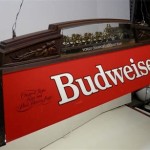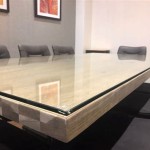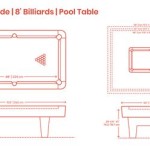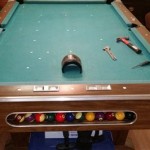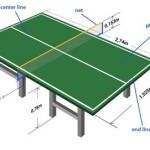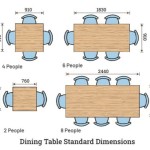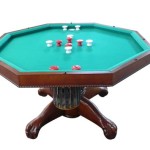```html
French Iron Table Base: A Timeless Foundation for Style and Durability
The French iron table base represents a significant element in furniture design, offering a blend of aesthetic appeal and structural integrity. Characterized by intricate craftsmanship and robust materials, these bases provide a stable and visually striking foundation for a variety of tabletop surfaces. They are frequently sought after for both residential and commercial applications, contributing a distinctive character to dining rooms, kitchens, patios, and restaurants.
The enduring popularity of the French iron table base stems from its versatility. It seamlessly integrates with diverse design styles, from rustic farmhouse to contemporary chic. The wrought iron construction ensures longevity, making it a practical and aesthetically pleasing choice for discerning consumers. The design elements often incorporate graceful curves, detailed scrollwork, and a sense of historical elegance, referencing French design traditions that have remained relevant for centuries.
The Distinctive Features of French Iron Table Bases
French iron table bases are defined by several key characteristics that distinguish them from other types of table supports. One of the most notable features is the material itself. Wrought iron, a durable and malleable form of iron, is the primary component. This material allows for intricate detailing and robust construction, capable of supporting heavy tabletop surfaces without compromising on aesthetic appeal.
Another defining characteristic is the design aesthetic. French iron table bases often incorporate scrolling patterns, floral motifs, and other decorative elements that evoke a sense of Old World charm. These details are typically handcrafted, adding to the uniqueness and value of each piece. The artistry involved in creating these bases reflects the skill and craftsmanship of artisans who are dedicated to preserving traditional techniques.
Finally, the finish of a French iron table base is an important consideration. While some bases are left with a natural iron finish, others are powder-coated or painted to enhance their appearance and provide protection against rust and corrosion. Popular finishes include black, white, antique bronze, and various shades of grey. The choice of finish can significantly impact the overall look and feel of the table, allowing it to seamlessly integrate with its surrounding environment.
Benefits of Choosing a French Iron Table Base
Selecting a French iron table base offers numerous advantages, ranging from durability and stability to aesthetic appeal and customization options. The inherent strength of wrought iron ensures that these bases can withstand significant weight and resist wear and tear, making them a long-lasting investment. This is particularly important for commercial settings where tables are subjected to heavy use on a daily basis.
The stability provided by a well-designed French iron table base is crucial for ensuring a comfortable and safe dining experience. The wide stance and solid construction prevent wobbling or tipping, even when the tabletop is unevenly loaded. This stability is especially important when using heavier tabletop materials such as granite, marble, or solid wood. The robust construction guarantees that the table remains secure and stable throughout its lifespan.
Aesthetically, French iron table bases add a touch of elegance and sophistication to any space. The intricate detailing and graceful curves create a visually striking focal point, enhancing the overall ambiance of the room. Whether paired with a rustic wood tabletop or a sleek glass surface, the French iron table base elevates the design aesthetic and adds a touch of timeless charm. Their visual appeal makes them a desirable choice for homeowners and interior designers alike.
Applications of French Iron Table Bases in Various Settings
The versatility of French iron table bases makes them suitable for a wide range of applications in both residential and commercial settings. In homes, they are commonly used in dining rooms, kitchens, and outdoor patios. A French iron table base can transform a simple kitchen table into a stylish gathering space, while providing a durable and stable surface for meal preparation and dining. On patios, they offer a weather-resistant and elegant foundation for outdoor dining and entertaining.
In commercial settings, French iron table bases are frequently found in restaurants, cafes, and bistros. Their durability and aesthetic appeal make them an ideal choice for high-traffic environments where both functionality and style are important. The ability to customize the finish and size of the base allows restaurant owners to create a cohesive and visually appealing dining atmosphere that reflects their brand identity. These bases can withstand the rigors of daily use, providing a reliable and attractive foundation for dining tables.
Beyond dining tables, French iron table bases can also be used for other purposes, such as console tables, coffee tables, and even desk bases. Their versatility allows them to be adapted to a variety of functions, adding a touch of elegance and durability to any piece of furniture. The strong and stable nature of wrought iron makes it a suitable choice for supporting a range of tabletop materials, from glass and wood to stone and metal. This adaptability contributes to their enduring popularity and widespread use.
The selection of a French iron table base often involves considering the specific dimensions and weight capacity required for the intended use. It is important to ensure that the base is appropriately sized to support the chosen tabletop and that it can withstand the expected load. Factors such as the diameter of the base, the thickness of the iron, and the welding techniques used in its construction all contribute to its overall strength and stability. Careful consideration of these factors ensures that the table will be both functional and aesthetically pleasing.
Maintenance of a French iron table base is relatively straightforward. Regular cleaning with a damp cloth is typically sufficient to remove dust and dirt. For bases with a painted or powder-coated finish, it is important to avoid using abrasive cleaners that could damage the surface. Periodic inspection for signs of rust or corrosion is also recommended, particularly for bases used in outdoor environments. Promptly addressing any rust spots can help to prolong the lifespan of the base and maintain its appearance.
The craftsmanship involved in creating French iron table bases is a testament to the skill and artistry of metalworkers. Many bases are handcrafted using traditional techniques, resulting in unique and visually stunning pieces. The attention to detail and the quality of the materials used ensure that these bases are not only durable but also aesthetically pleasing. The handmade nature of these bases adds to their value and appeal, making them a desirable choice for those who appreciate fine craftsmanship.
The enduring appeal of the French iron table base lies in its ability to combine functionality with style. It provides a stable and durable foundation for a variety of tabletop surfaces while adding a touch of elegance and sophistication to any space. Their versatility and timeless design make them a popular choice for both residential and commercial applications, contributing to their continued relevance in the world of furniture design.
Factors to Consider When Purchasing a French Iron Table Base
Selecting the right French iron table base requires careful consideration of several factors to ensure it meets specific needs and preferences. The first consideration is the size and shape of the tabletop it will support. The base must be adequately sized to provide stable support and prevent the tabletop from tipping or wobbling. The shape of the base should also complement the shape of the tabletop, creating a visually harmonious and balanced design.
Another important factor is the weight capacity of the base. Different tabletop materials have different weights, and the base must be strong enough to support the chosen material without bending or breaking. It is essential to consult the manufacturer's specifications to determine the maximum weight capacity of the base and ensure it is suitable for the intended application. Overloading the base can compromise its structural integrity and potentially lead to accidents.
Finally, the finish of the base should be carefully considered to complement the overall design aesthetic of the space. Popular finishes include black, white, antique bronze, and various shades of grey. The choice of finish can significantly impact the look and feel of the table, allowing it to seamlessly integrate with its surrounding environment. It is also important to consider the durability of the finish and its resistance to scratches, rust, and other forms of wear and tear.
```
Vintage Heavy Cast Iron French Rococo Style Ornate Dining Pedestal Table Base For At 1stdibs Antique

Vintage French Iron Scroll Bakers Table Base

Vintage French Iron Scroll Bakers Table Base

French Dining Table Base Iron Only Timelesswroughtiron

French Wrought Iron Oval Table Base For At 1stdibs Decorative Legs Forged

French Mid Century Coffee Or Low Table With Wrought Iron Base And Marble Top Antique Swan

Beautiful French Iron Garden Table Ad Ps Antiques

Antique French Iron Table Base Distressed Chairish

Vintage French Bistro Cast Iron Pastry Table Base Dining Console Pedestal Desk At 1stdibs

French Dining Table Or Base For 72 84 Tops Iron Accents
Related Posts

